Packing my kit carefully placing a spare jacket water food and my mobile into my dry bag I was filled with excitement. The day was beautiful warm and calm as I prepared my paddle board for a solo adventure into Loch Leven to visit Eilean Munde
Before setting off I rang my parents with my route and exact time of return, put on my buoyancy aid, attached my board leash to a quick release belt and put my helmet on. When heading out alone safety is my top priority and with all my equipment attached to my board, I pushed off from the slipway at Ballachulish and into the harbour where once ships lay waiting to take their slate cargo around the world. Nearby, can be seen a section of the metal rails that once brought slate from the quarry to the shore.
The slate boat houses shone in the sun as I carefully paddled round to the quay wall to look for wildlife hiding in the stones.
Carefully I made my way along the wall and under the walkway of the floating pontoon watching starfish, sea gooseberries, fish, anemones, mussels and other marine life under the crystal-clear water.
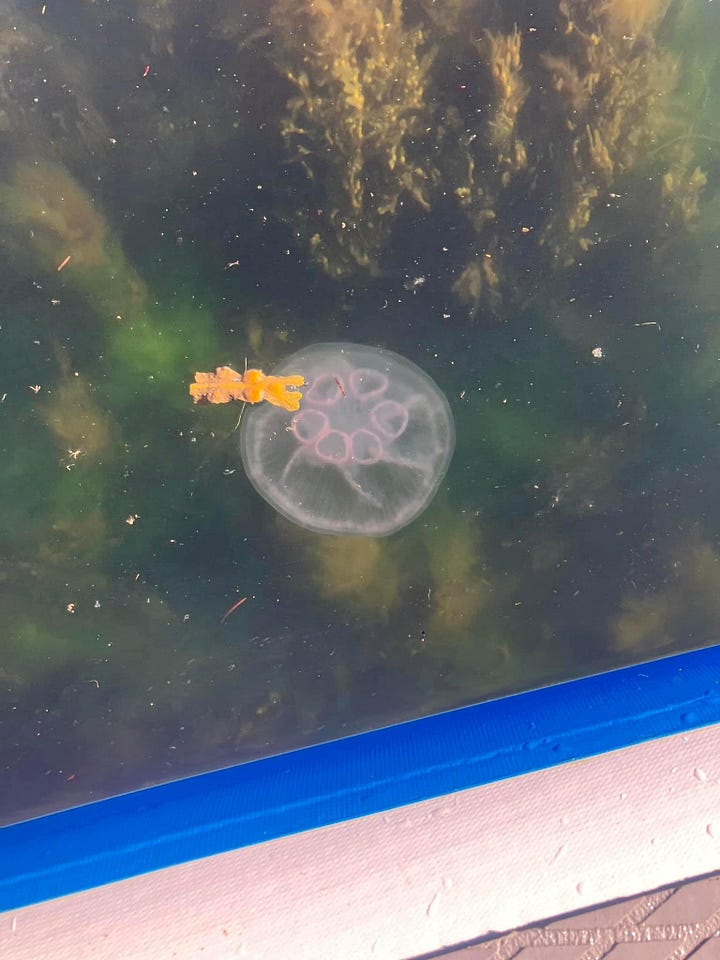
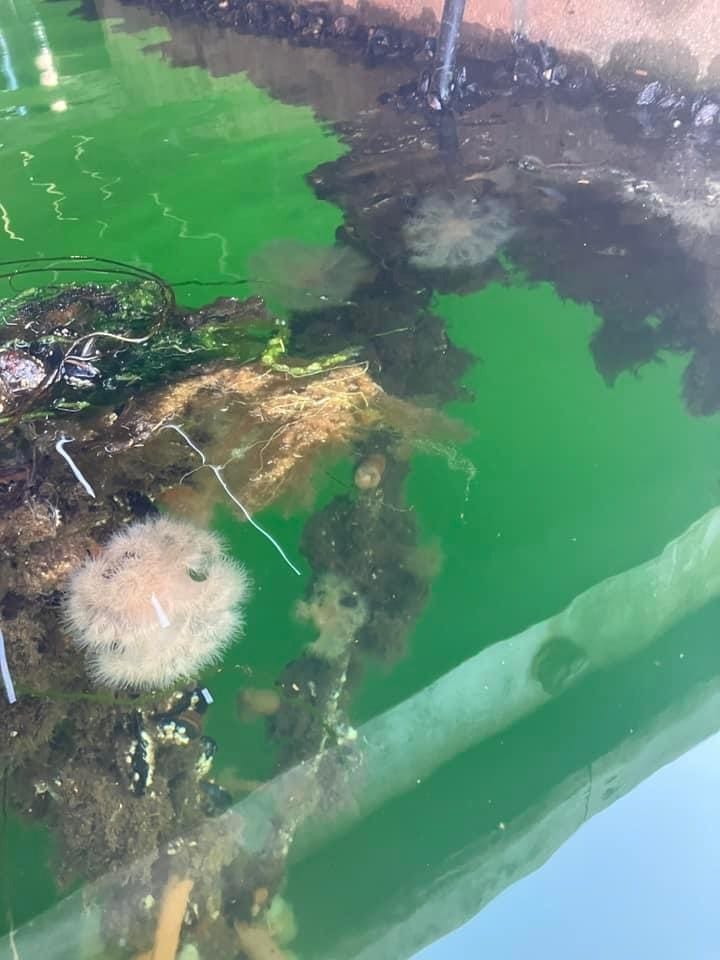
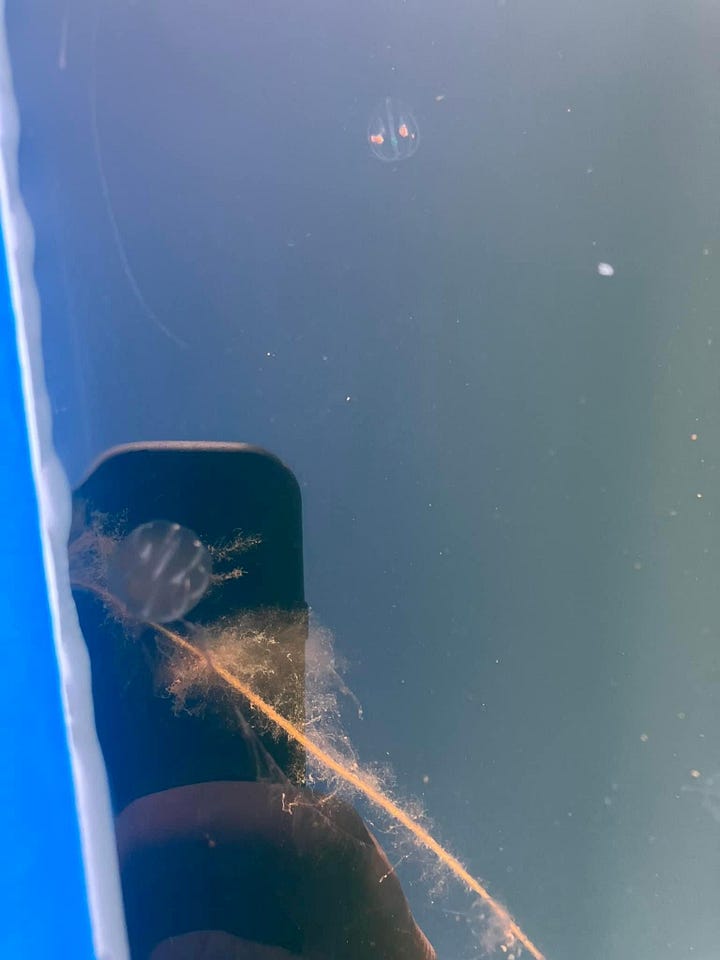

Satisfied it was time to head out to explore, my goal an island I had seen every day but never visited before, a small island with a long history. Paddling out into the loch the swell increased but the sun continued to shine, and it was an easy paddle across to Eilean Munde, the burial isle of local clans. Rather than landing straight away I carefully navigated around the island, gazing into the clear water, watching dog whelks, winkles and other marine life in amongst the seaweed below the waves, before pulling into a shallow bay where I jumped off my paddle board and carefully waded ashore through the gritty sand.
I timed my visit carefully to avoid the breeding season of the many birds that called the Island Munde and the nearby islands home, from the terns which have travelled across the globe to return to Loch Leven to breed to the charismatic black guillemot. The islands also are also home to otters and common seals which breed in the loch and small cetaceans have been spotted aroundin its waters.
Interestingly the shoreline of the islands is very different from the shoreline of Ballachulish, this is because waste slate piles from the quarrying activities in the village were spread out along the coast to clean up the village in the 1970’s, and remain part of the charactistic of the mainland shoreline.
Pulling my boat ashore, I grabbed my bag and headed up the short slope to my right and on to the top of the island to be greeted by the graves and ruins of an ancient Chapel founded by Saint Fintan Munnu in the 7th century. The original church burnt down in 1495 but was rebuilt in the 16th century with the last service being held there in July 1653. Most of the gravestones are made of the familiar Ballachulish slate from the nearby quarries.
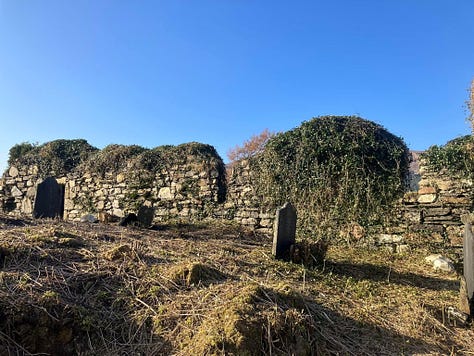
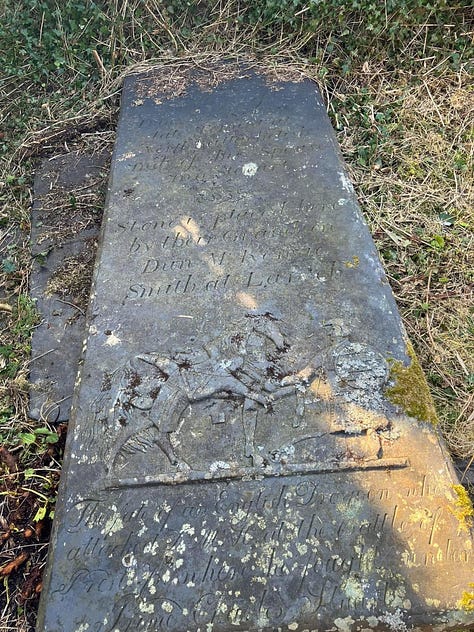
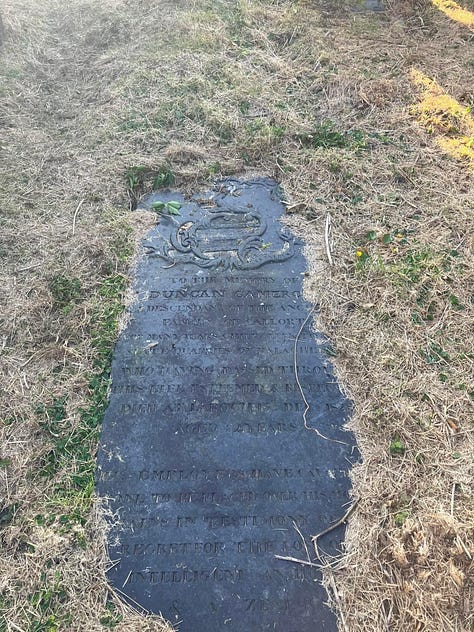

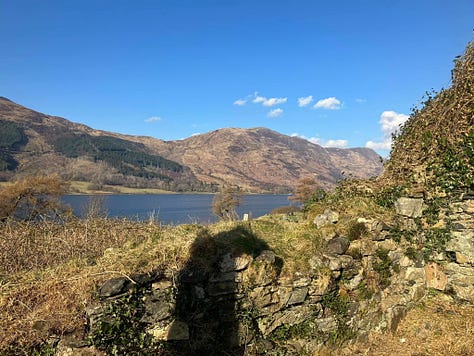

Eilean Munde has been the final resting place for the dead of local clans for generations, safeguarded from the threats of scavengers and predation that the mainland presented. The meticulous respect for tradition is evident in the clans' practice of having designated landing spots on the island, a deep-rooted honour and reverence for the deceased.
The island's most infamous resident, Alasdair Ruadh MacIain, Chief of the Glencoe MacDonalds, met a tragic end in February 1692, a victim of the notorious massacre led by Campbell of Glen Lyon. This event, which saw the murder of around 38 men, women, and children, remains a dark chapter in Scotland's history, the echoes of which I still felt on the quiet shores of Eilean Munde. With around 300 graves, the island is a silent witness to the lives that have shaped the region, from warriors and chiefs to the innocent victims of clan disputes.
Surrounding Eilean Munde are smaller islands like Eilean a’ Chomhridh ( the island of discussion), and Eilean na Bainne, (the Isle of Covenant), these islands played crucial roles in the social fabric of the clans, serving as neutral grounds for resolving disputes and forging agreements.
I jumped back on my paddleboard and headed out to paddle around the nearby islands, all the while being watched by a curious young common seal. It’s amazing to think that once this loch saw a Viking invasion, the longships sailing down the loch towards Glencoe, and that a battle was fought upon the mainland shore, the Battle of Laroch, now almost forgotten in the mists of time.
Maybe earlier still the first people in the area used the loch for hunting and fishing, building canoes from the plentiful woodland that once surrounded it. Did they also visit the islands, those early visitors whose remains were placed in the stone burial cists nearby?
In 1880, the Ballachulish goddess was discovered in peat during building works in North Ballachulish, a place visible from Eilean Munde. This alder statue with pebble eyes was lying face down on the gravel of an old, raised beach, 120m from today’s loch shore, subsequent radiocarbon dating has shown that it is over 2,500 years old and dates to around 600BC, about the time when iron was beginning to be used in Scotland. Evidence also shows that the figure probably once stood on the raised beach before the peat was formed and may have had a wicker covering of some kind as intwined branches and twigs with some straighter poles were discovered both under and above the figure. What must those eyes have borne witness too all those years ago?
As the sun began to lower, casting a golden glow over the loch, I paddled back toward the harbour at Ballachulish. The calm waters lapped gently against the board, a stark contrast to the deep and turbulent history of these islands. In just a few hours, I had connected with centuries of life, death, and conflict that had unfolded here, each moment adding another layer to the already rich history known and unknown of Loch Leven.
Reaching the slipway, I pulled my board ashore and took a final look across the loch. The islands, silent sentinels of Scotland’s past, would remain long after I left, but the memories of this journey would stay with me. There is something profoundly humbling about being a small part of such a vast history, carried by the same waters that once bore warriors, merchants, and clansmen. As I packed away my gear, I felt a deep sense of gratitude for this experience—a blend of adventure, nature, and a shared connection with those who came before me.
Michelle Melville is High Life Highland’s Heritage Ranger, is passionately dedicated to preserving Scottish natural and cultural heritage. A skilled artisan, Michelle excels in a range of hand crafts from carving and weaving to stained glass creation and needle felting. Her talent in these crafts forms a vital part of her role in engaging and inspiring communities to be inspired by their environment, and learn new skills and gain in confidence.


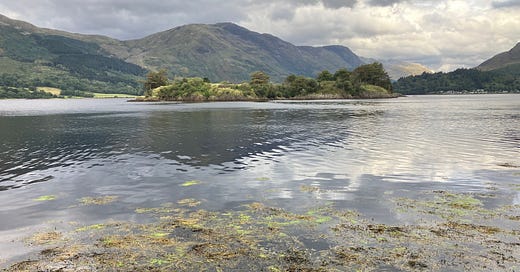



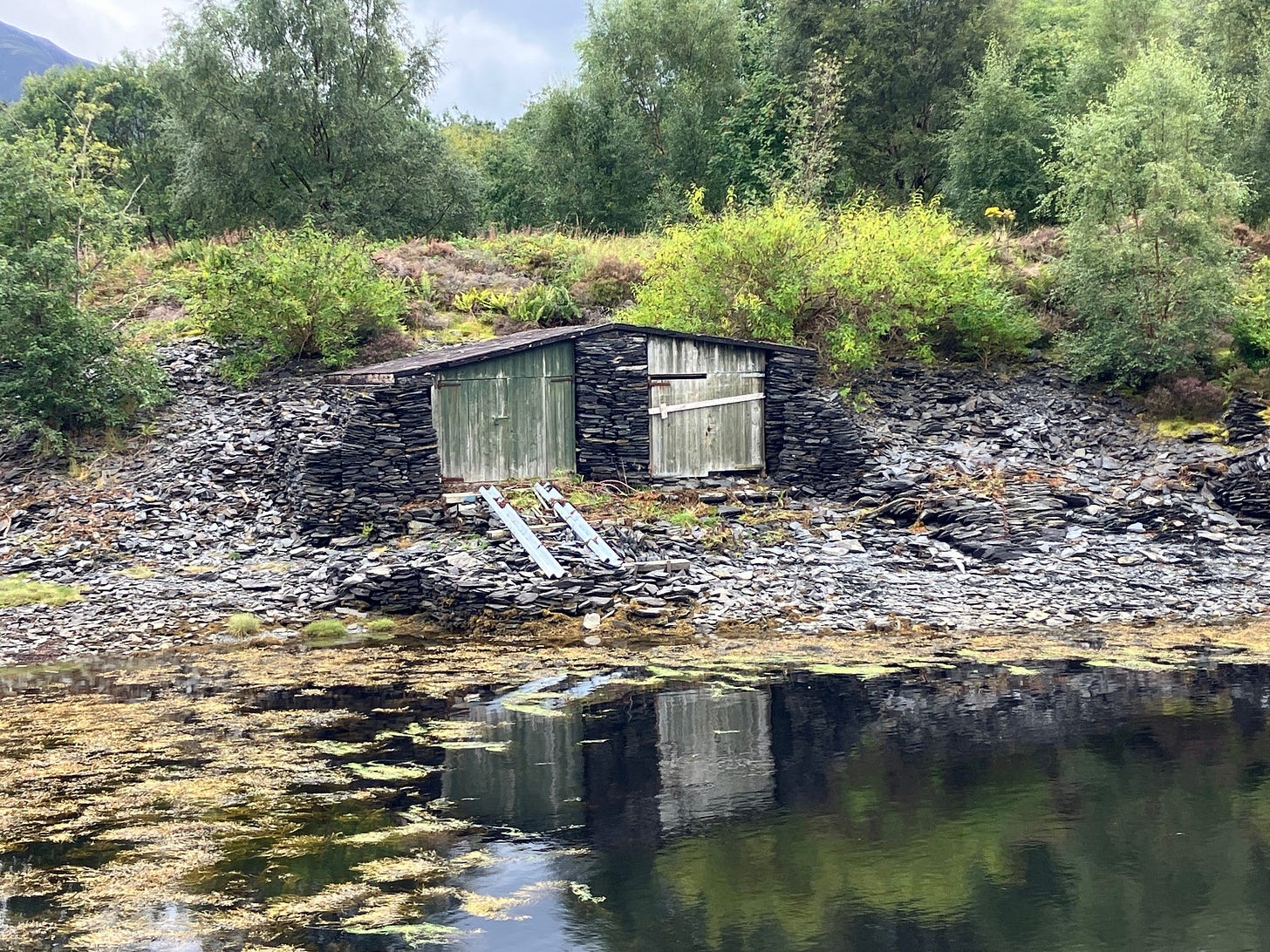

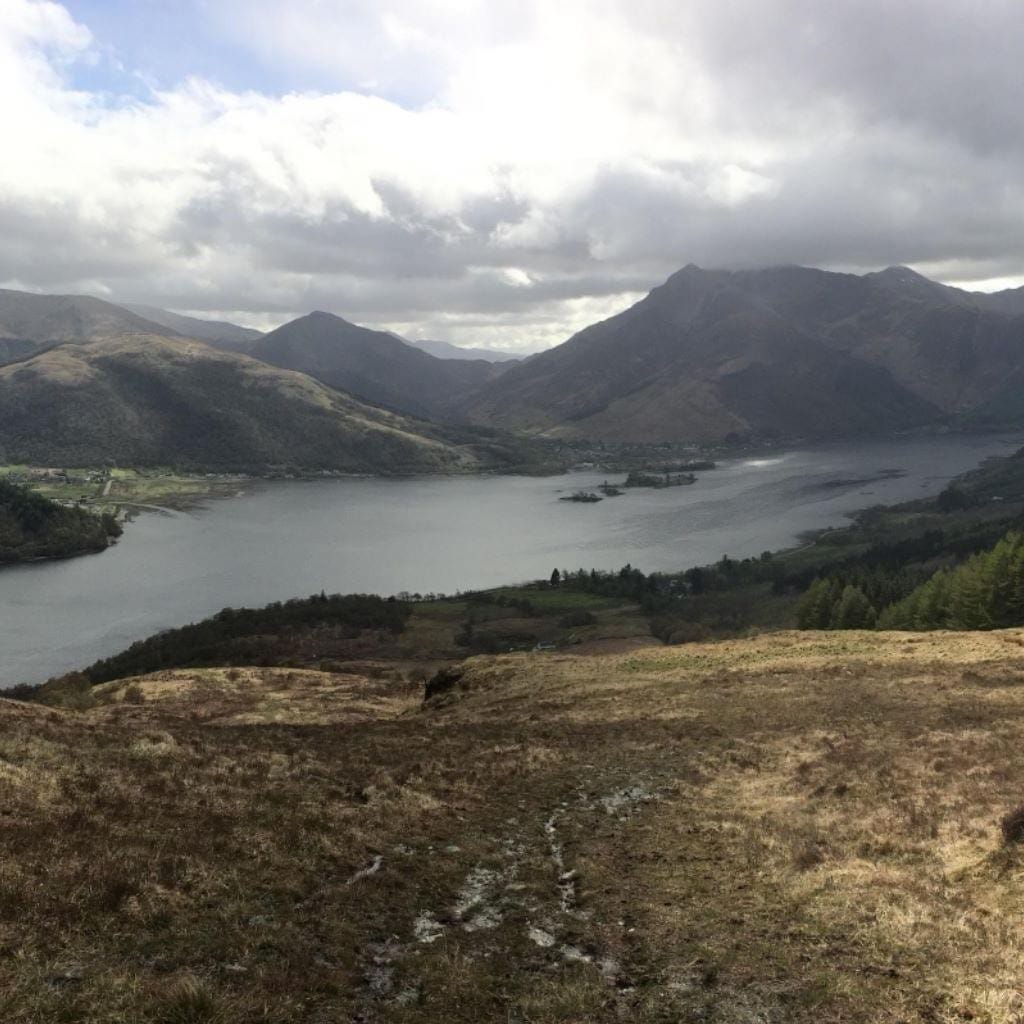


Thank you for sharing your experience, Michelle :) beautiful and inspiring <3
Cracking report. I so want to go out there on my kayak.